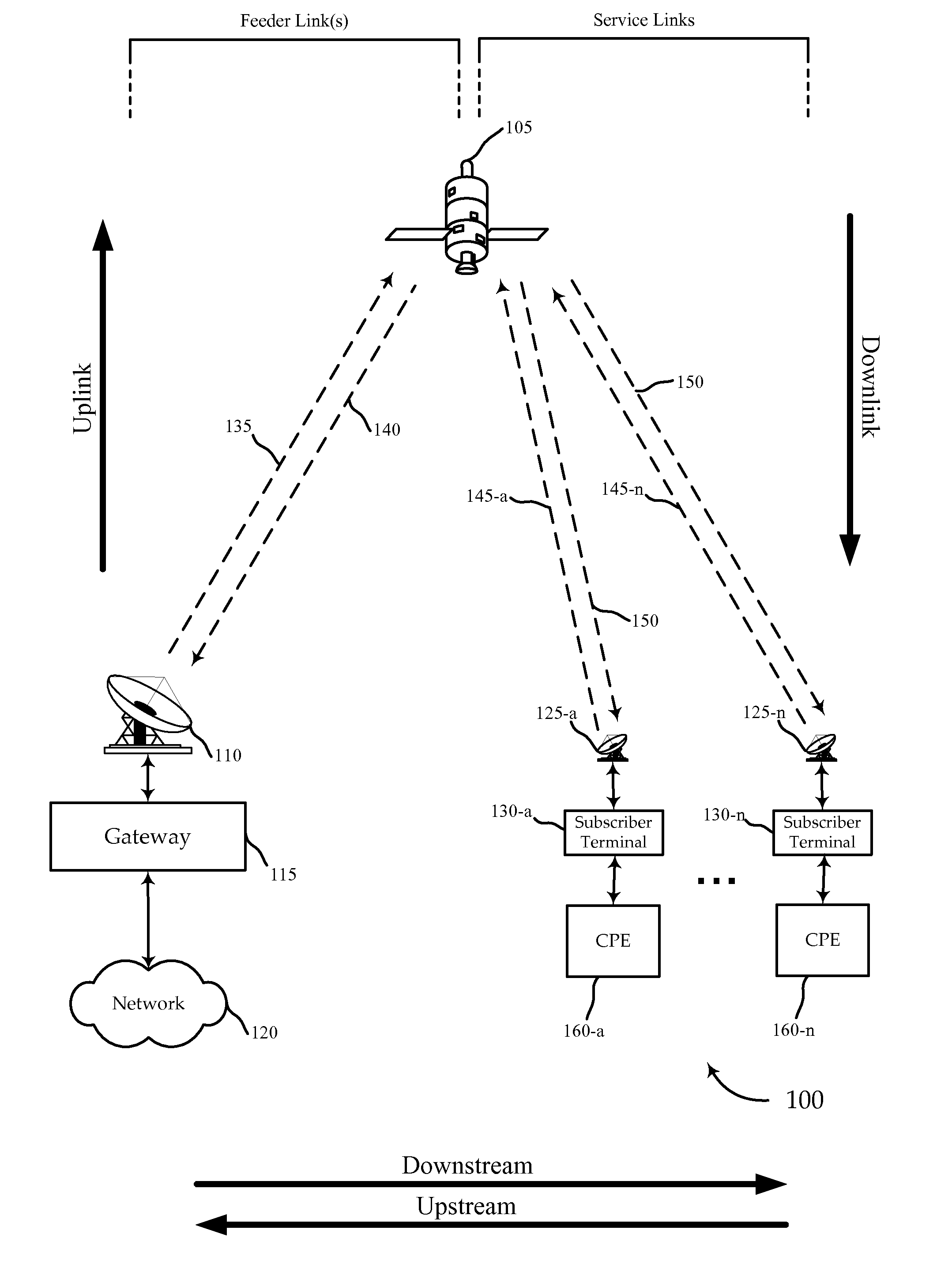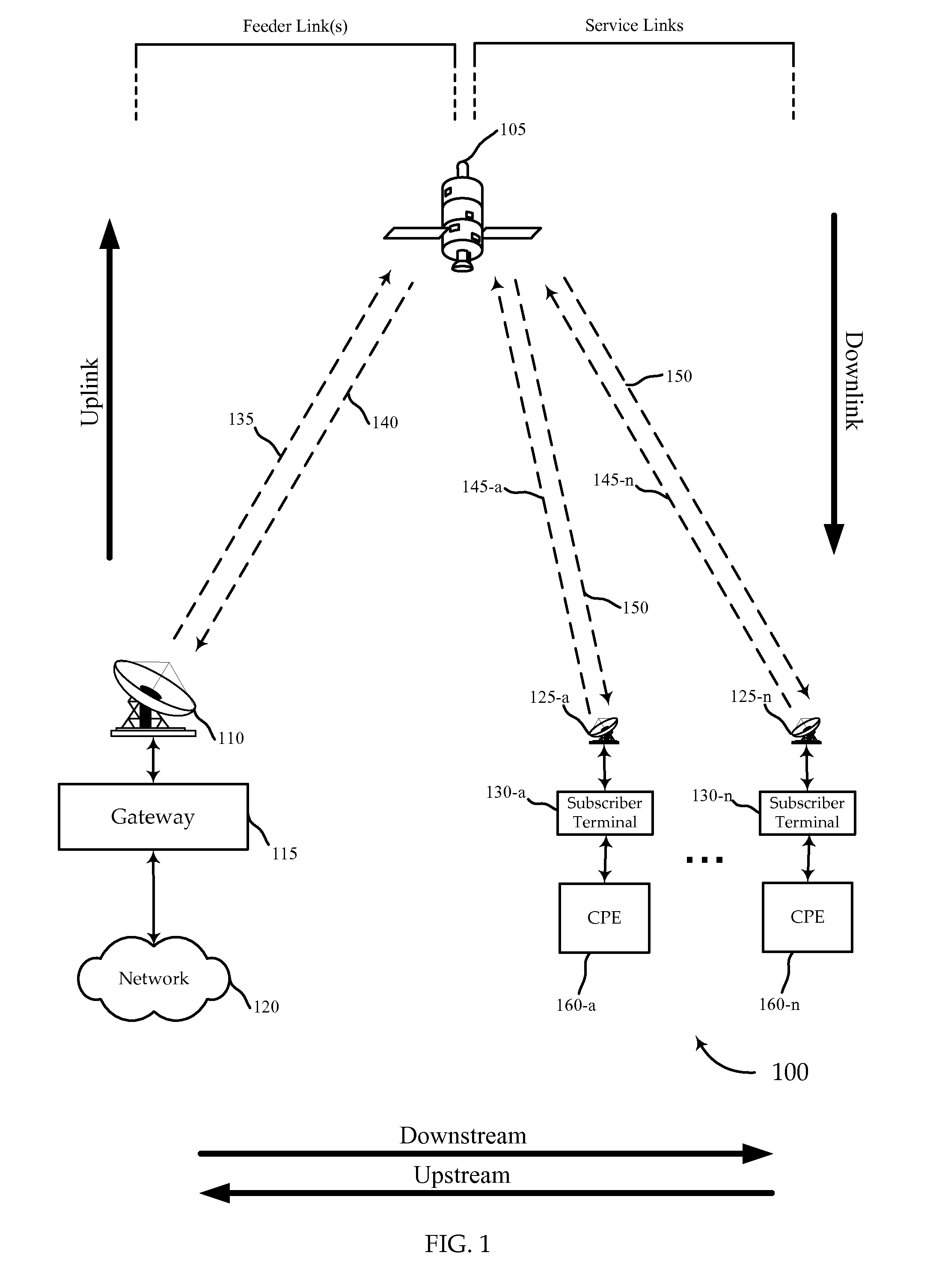Upstream resource optimization
a technology of resource optimization and resource allocation, applied in the direction of wireless communication services, electrical equipment, wireless commuication services, etc., can solve the problems of inherently limiting the number of customers that may be adequately served, limiting the bandwidth of each subscriber, and the demand for such broadband services continues to grow
- Summary
- Abstract
- Description
- Claims
- Application Information
AI Technical Summary
Benefits of technology
Problems solved by technology
Method used
Image
Examples
Embodiment Construction
[0031]Systems, methods, and devices are described for scheduling upstream satellite communications. Various mapping, channelization, and frequency hopping techniques are described for upstream satellite signals. The description herein provides example embodiments only, and is not intended to limit the scope, applicability, or configuration of the invention. Rather, the description of the embodiments will provide those skilled in the art with an enabling description for implementing embodiments of the invention. Various changes may be made in the function and arrangement of elements without departing from the spirit and scope of the invention.
[0032]Thus, various embodiments may omit, substitute, or add various procedures or components as appropriate. For instance, it should be appreciated that in alternative embodiments, the methods may be performed in an order different than that described, and that various steps may be added, omitted, or combined. Also, features described with resp...
PUM
 Login to View More
Login to View More Abstract
Description
Claims
Application Information
 Login to View More
Login to View More - R&D
- Intellectual Property
- Life Sciences
- Materials
- Tech Scout
- Unparalleled Data Quality
- Higher Quality Content
- 60% Fewer Hallucinations
Browse by: Latest US Patents, China's latest patents, Technical Efficacy Thesaurus, Application Domain, Technology Topic, Popular Technical Reports.
© 2025 PatSnap. All rights reserved.Legal|Privacy policy|Modern Slavery Act Transparency Statement|Sitemap|About US| Contact US: help@patsnap.com



